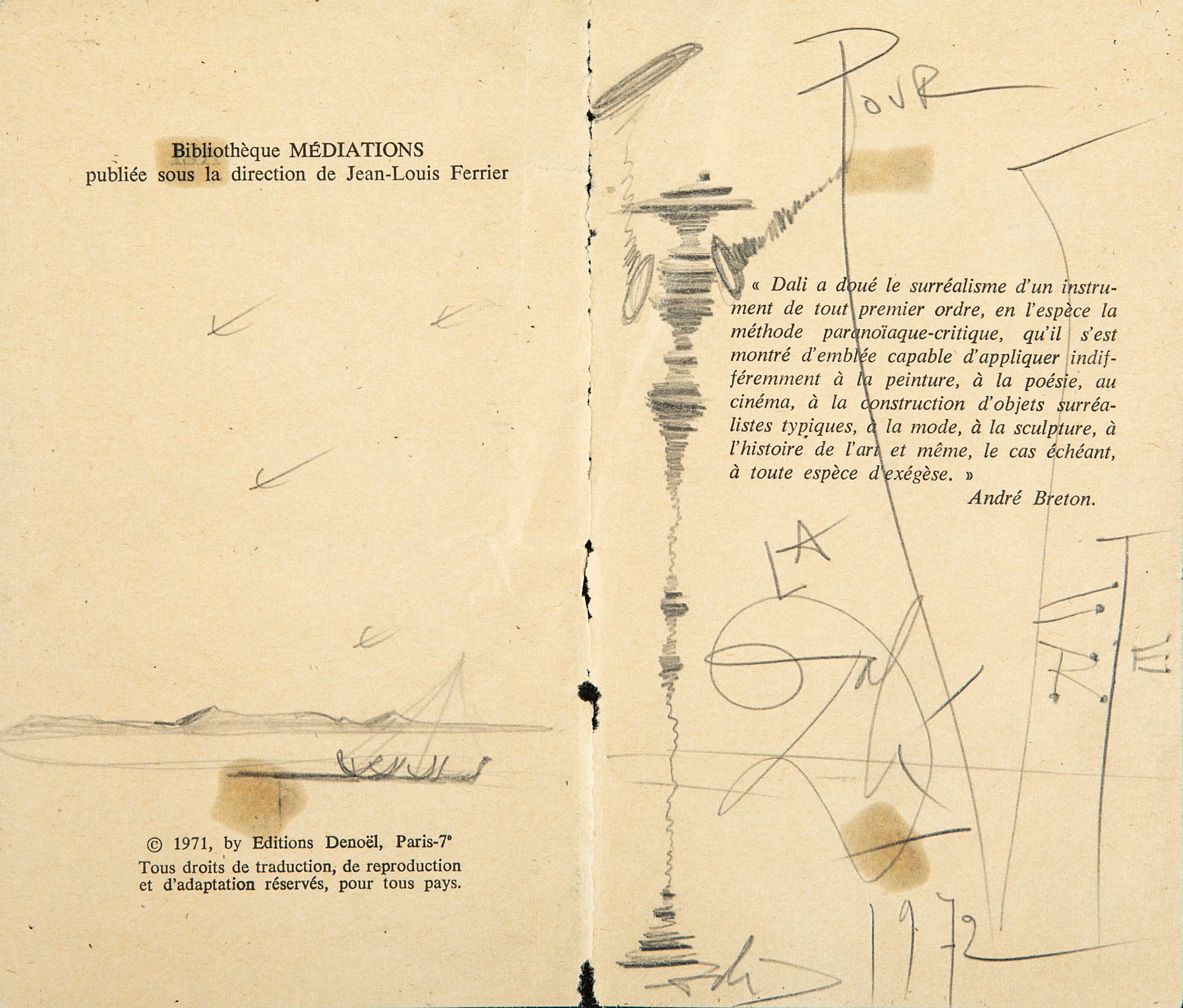Description
SALVADOR DALÍ I DOMÈNECH (Figueres, Girona, 1904 - 1989).
SALVADOR DALÍ I DOMÈNECH (Figueres, Girona, 1904 - 1989). "Pour la verité", 1972. Ink drawing on paper page "Dalí, Oui". Attached certificate issued by R. Descharnes in 1983. Size: 18 x 21 cm; 35 x 41 cm (frame). The fascination that Salvador Dalí felt for Don Quixote de la Mancha was materialized in the multiple drawings, sketches, engravings and sculptures that the surrealist genius dedicated to Cervantes' character. In 1945, Salvador Dalí, attracted by the fervent personality of the Ingenious Hidalgo and influenced by the advice of his father, who had assured him that "Don Quixote was a work in which the faculties could easily excel", made illustrations in different media. The drawing in question, like many others by the surrealist genius, personifies the Knight Errant from a swirl of agile and carefree forms. During his early years, Dalí discovered contemporary painting during a family visit to Cadaqués, where he met the family of Ramon Pichot, an artist who regularly traveled to Paris. Following Pichot's advice, Dalí began to study painting with Juan Núñez. In 1922, Dalí stayed at the famous Residencia de Estudiantes in Madrid to begin studying Fine Arts at the San Fernando Academy. However, before his final exams in 1926, he was expelled for claiming that there was no one there fit to examine him. That same year Dalí traveled to Paris for the first time. There he met Picasso, and established some formal characteristics that would become distinctive of all his work from then on. His language absorbed the influences of many artistic styles, from classical academicism to the most groundbreaking avant-garde. At that time, the painter grew an eye-catching moustache imitating Velázquez's, which would become his personal trademark for the rest of his life. In 1929, Dalí collaborated with Luis Buñuel in the making of "An Andalusian Dog", in which scenes from the surrealist imaginary were shown. In August of that same year he met his muse and future wife Gala. During this period, Dalí held regular exhibitions in both Barcelona and Paris, and joined the surrealist group based in the Parisian neighborhood of Montparnasse. His work greatly influenced the direction of surrealism for the next two years, and he was hailed as the creator of the paranoiac-critical method, which was said to help access the subconscious by releasing creative artistic energies. In 1931 Dalí painted one of his most famous works, "The Persistence of Memory", in which, according to some theories, he illustrated his rejection of time as a rigid or deterministic entity. The painter landed in America in 1934, thanks to art dealer Julian Levy. As a result of his first individual exhibition in New York, his international projection was definitively consolidated, and from then on he would show his work and give lectures all over the world. That same year he was subjected to a "surrealist trial" which resulted in his expulsion from the movement, because the painter considered that surrealism could exist in an apolitical context, refusing to commit himself to the ideas of André Breton. To this, Dalí responded with his famous retort, "I am surrealism". Most of his production is gathered in the Dalí Theater-Museum in Figueras, followed by the collection of the Salvador Dalí Museum in St. Petersburg (Florida), the Reina Sofía in Madrid, the Salvador Dalí Gallery in Pacific Palisades (California), the Espace Dalí in Montmartre (Paris) or the Dalí Universe in London.
54
SALVADOR DALÍ I DOMÈNECH (Figueres, Girona, 1904 - 1989).
